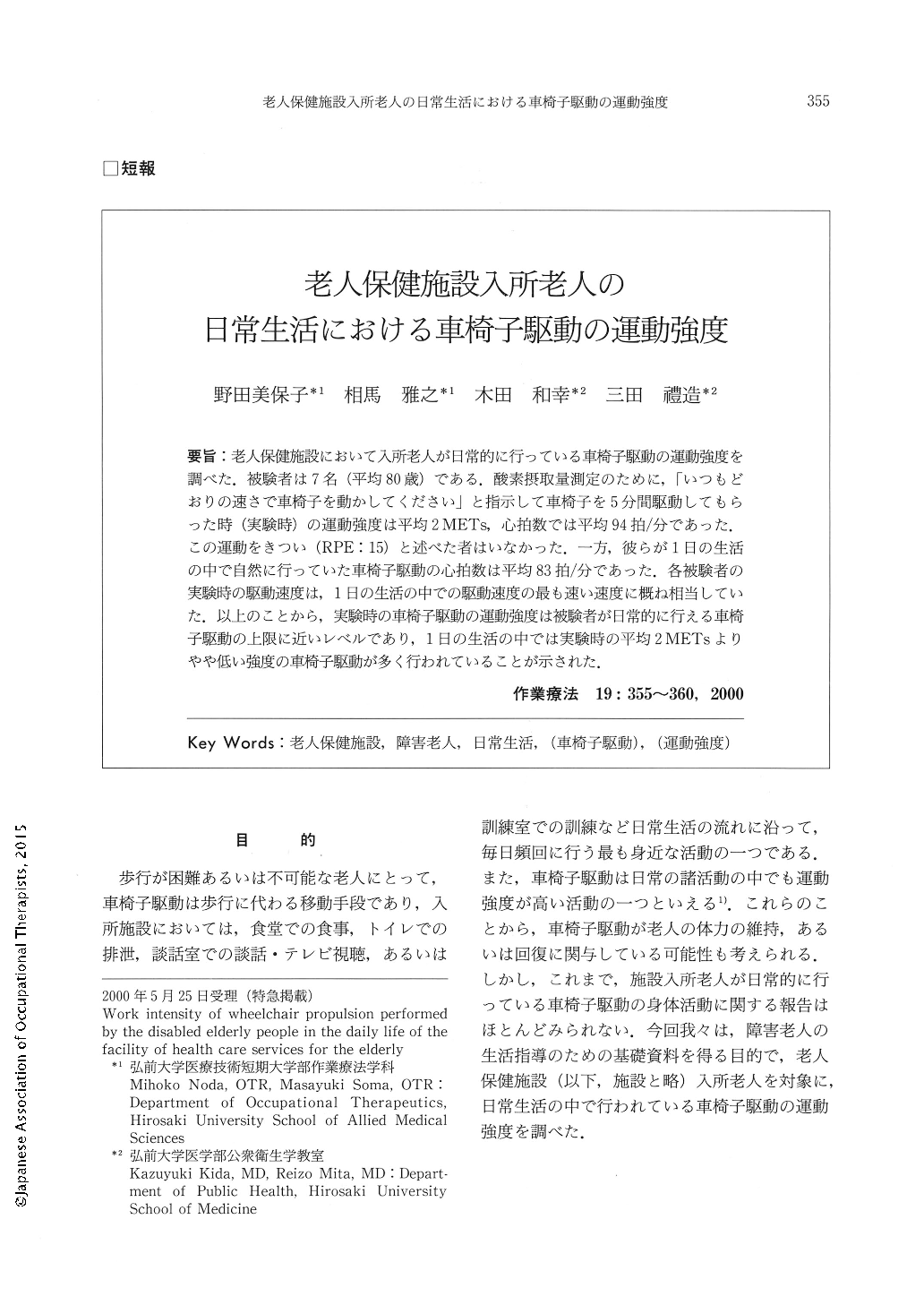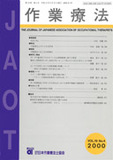Japanese
English
- 販売していません
- Abstract 文献概要
- 1ページ目 Look Inside
- 参考文献 Reference
- サイト内被引用 Cited by
要旨:老人保健施設において入所老人が日常的に行っている車椅子駆動の運動強度を調べた.被験者は7名(平均80歳)である.酸素摂取量測定のために,「いつもどおりの速さで車椅子を動かしてください」と指示して車椅子を5分間駆動してもらった時(実験時)の運動強度は平均2METs,心拍数では平均94拍/分であった.この運動をきつい(RPE:15)と述べた者はいなかった.一方,彼らが1日の生活の中で自然に行っていた車椅子駆動の心拍数は平均83拍/分であった.各被験者の実験時の駆動速度は,1日の生活の中での駆動速度の最も速い速度に概ね相当していた.以上のことから,実験時の車椅子駆動の運動強度は被験者が日常的に行える車椅子駆動の上限に近いレベルであり,1日の生活の中では実験時の平均2METsよりやや低い強度の車椅子駆動が多く行われていることが示された.
The purpose of this study was to quantitate the work intensity of wheelchair (w/c) propulsion performed by disabled elderly people in the daily life of a facility of health care services for the elderly. Seven disabled elderly people (mean age of 80 yr) volunteered to participate in this study. The work intensity of w/c propulsion performed by them in the experimental condition for 5 minutes at their usual speed, was 2 METs and 94 beats/min on average. There was no subject who thought the work hard (RPE=15). While the work intensity of w/c propulsion performed by them naturally in their 24 hours daily life was 83 beats/min on average. In each subject, the velocity of w/c propulsion in the experimental condition was almost the same as the fastest one observed in daily life. These results show that the intensity of w/c propulsion in the experimental condition corresponds almost to the upper limit intensity of w/c propulsion performed actually in daily life.

Copyright © 2000, Japanese Association of Occupational Therapists. All rights reserved.


